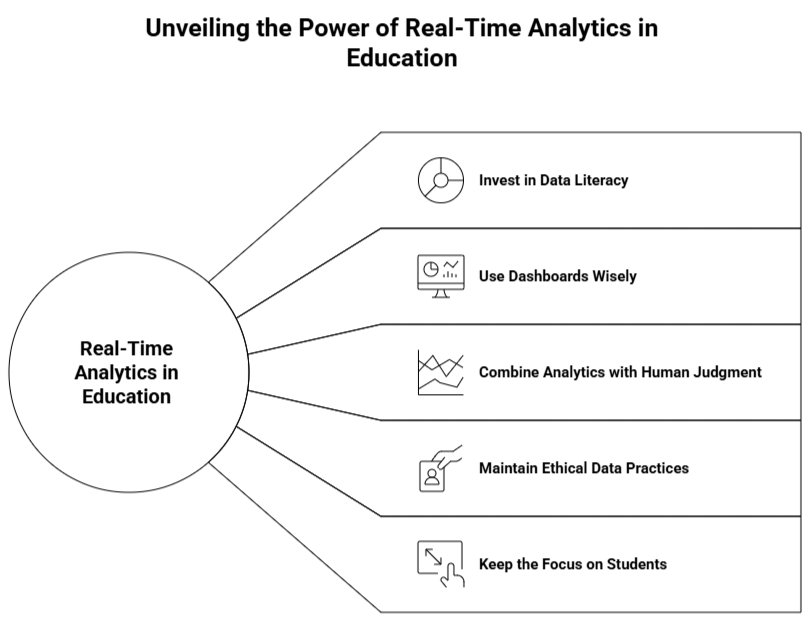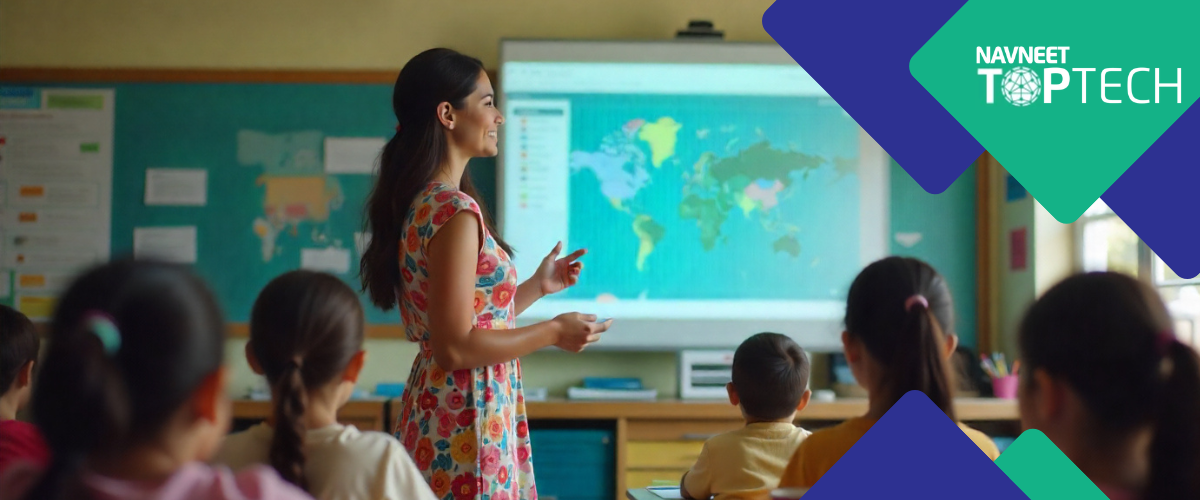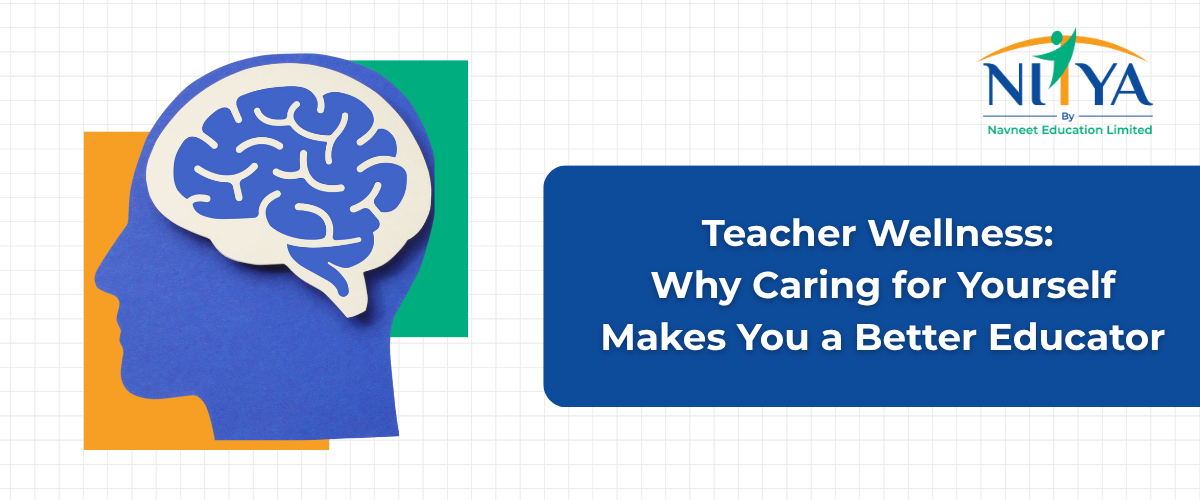Classrooms today move faster than ever. Lessons are dynamic, students learn through multiple formats, and assessments happen continuously. But for teachers, one challenge remains: how to truly keep pace with what students are grasping in the moment. This is where real-time analytics changes the game. By giving teachers instant insights into performance, participation, and progress, it bridges the gap between teaching and learning.
This blog explores how real-time analytics is reshaping classroom practices, the ways it empowers teachers with actionable insights, best practices for applying it effectively, and the common challenges schools face when adopting it, with practical ways to overcome them.
What are Real-Time Analytics?
Real-time analytics refers to the ability to collect, process, and interpret data as it happens. In a classroom, this could mean instantly identifying which students are struggling with a math concept, tracking engagement during a science activity, or spotting patterns in quiz performance as soon as students submit their answers.
Unlike traditional methods where insights often arrive days or weeks later, real-time analytics allows teachers to act immediately, reteaching a concept, adjusting the pace, or offering targeted support right when it matters most. It is not about adding more data into the mix, but about turning classroom information into timely, actionable feedback that enhances both teaching and learning.
How Real-Time Analytics Works
At its core, real-time analytics relies on three simple but powerful steps: data collection, instant processing, and immediate feedback. In a school setting, this means that every student interaction, from answering a quiz to participating in a classroom poll, becomes valuable input. The system captures these responses, analyzes them instantly, and translates the results into insights that teachers can view right away.
For example, if half the class misunderstands a question in a digital assessment, the teacher sees this pattern immediately and can pause to clarify before moving forward. Similarly, trends across homework submissions or participation levels can highlight areas where students need extra attention. Instead of working with a lag, teachers gain a real-time pulse of the classroom, which leads to more responsive and effective teaching.
| Step | What happens in Practice | Benefit for Teachers |
| Data Collection | Student responses, clicks, or submissions | Captures ongoing learning progress |
| Instant Processing | Automated analysis of student input | Removes manual tabulation or delays |
| Immediate feedback | Insights available within seconds | Enables quick action and course correction |
Key Ways Real-Time Analytics Empower Teachers
Real-time analytics is not just about faster numbers; it’s about giving teachers the ability to act decisively in the classroom.
- Spotting learning gaps quickly
Instead of discovering weaknesses only after exams, teachers can now see them as they happen. For instance, if students repeatedly struggle with fractions in a digital quiz, the insight shows up instantly. Digital platforms capture these patterns in real time, so teachers don’t have to wait for test results to know where a class is stuck. This allows them to revisit a concept immediately, before misconceptions take root.
- Personalizing learning paths
Not all students grasp ideas at the same pace. Real-time analytics make it possible to group learners by their current understanding and tailor assignments accordingly. A student excelling in algebra can be nudged toward advanced problems, while another needing more practice receives targeted support. NAVNEET TOPTECH enables this differentiation within the same classroom session, making personalization less about extra workload and more about smarter use of insights.
- Encouraging active participation
When students know their inputs are visible right away, they engage more actively. Quick polls, interactive worksheets, or live question rounds give every learner a voice. Teachers can also see who tends to stay quiet and draw them into the discussion. With technology’s interactive features, participation becomes both measurable and meaningful, helping teachers balance attention across the classroom.
- Saving time for deeper teaching
Manual tabulation of marks or tracking classroom participation can be tedious. With real-time dashboards, these tasks are automated. NAVNEET TOPTECH streamlines this process, allowing teachers to focus less on record-keeping and more on instruction. Instead of chasing data, they spend their energy on interpretation and mentoring, the areas where their expertise matters most.
- Strengthening parent communication
Real-time insights don’t just stay with teachers. They can be shared with parents to create transparency around a child’s progress. Instead of waiting for the next parent-teacher meeting, updates flow continuously, helping families support learning at home. Digital tools make this bridge easier by giving teachers ready-to-share reports, ensuring parents are informed partners in the learning journey.
Best Practices for Teachers to Use Real-Time Analytics Effectively

Real-time analytics can be transformative, but the impact depends on how teachers use the data in practice. Here are some best practices that help educators get the most out of these tools:
1. Invest in Data Literacy
Understanding how to interpret dashboards and reports is as important as having access to them. With basic training, teachers can immediately spot the gap and reframe the lesson the very next day. Schools that provide training workshops or regular upskilling sessions see higher adoption and better teaching outcomes. With NAVNEET TOPTECH’S solutions, teachers are supported through intuitive interfaces that minimize the learning curve and focus on actionable insights rather than raw data.
2. Use Dashboards Wisely
Analytics platforms often offer a wide range of data points, which can sometimes feel overwhelming. Teachers should identify key metrics, like student participation, quiz performance, or assignment completion, that directly inform instruction. Digital dashboards are designed to highlight these priority areas, ensuring teachers can act quickly without drowning in numbers. For example, if a dashboard highlights that a student is consistently missing homework deadlines, teachers can step in with timely support.
3. Combine Analytics with Human Judgment
Numbers reveal patterns, but they don’t replace a teacher’s understanding of their students. For example, if analytics show a student is disengaged, the root cause might be personal, not academic. Teachers should use analytics as a guide while relying on classroom experience to tailor responses. Digital tools complement this process by making patterns visible, while leaving space for teachers’ professional intuition.
4. Maintain Ethical Data Practices
With more student data being collected, privacy and responsible use become critical. Teachers should ensure they’re only sharing insights with relevant stakeholders, such as parents or administrators, and protecting sensitive information. NAVNEET TOPTECH embeds privacy-first design into its smart classroom solutions, helping schools stay compliant while teachers focus on learning outcomes.
5. Keep the Focus on Students, Not Just Numbers
Ultimately, the goal of analytics is to improve student learning and engagement. Teachers should regularly step back and ask: How is this data helping my students today? For example, if real-time analytics show a student learns faster with visual aids, the teacher can add more diagrams or videos in lessons to keep them motivated. Tools today are designed to keep this focus central, turning insights into clear strategies that directly support student growth.
Challenges and How to Overcome Them
1. Data Privacy & Security
Schools handle sensitive information, from student performance to attendance patterns, and teachers often worry about how safely this data is stored.
Solution: Work with platforms that follow strict security protocols and ensure data is encrypted. A simple practice like assigning role-based access can also reassure teachers and parents that information stays protected.
2. Teacher Resistance to Tech Adoption
For many educators, analytics feels like an added burden rather than a classroom aid. The fear is that technology might overshadow the human touch.
Solution: Introduce analytics in small, low-pressure steps. Start with features that make daily tasks easier, like auto-generated progress reports, so teachers see value without feeling overwhelmed.
3. Infrastructure Limitations
Not every school has high-speed internet or advanced devices, especially in semi-urban and rural areas. This makes real-time analytics feel out of reach.
Solution: Opt for tools designed to work on basic infrastructure. Offline compatibility, lightweight apps, and mobile-first dashboards can help schools overcome these barriers without expensive upgrades.
Conclusion
Real-time analytics isn’t just another EdTech buzzword. It’s reshaping classrooms by giving teachers immediate visibility into learning gaps, student engagement, and progress. Instead of waiting weeks for test results or reports, teachers can now act in the moment — adjusting lessons, offering extra support, or celebrating achievements right when it matters most.
When combined with thoughtful teaching, analytics becomes a true enabler: helping schools create more personalized, transparent, and effective learning environments. The goal isn’t to replace teachers, but to empower them with sharper insights so they can do what they do best, inspire and guide.
If you’re an educator or school leader, now is the time to explore how real-time analytics can work in your classrooms. Start small, experiment, and discover how the right tools can transform both teaching and learning.




